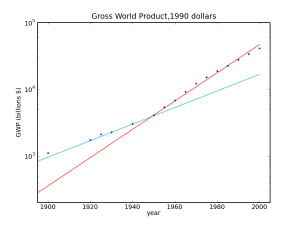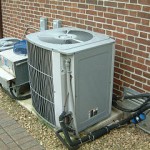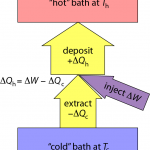[An updated treatment of this material appears in Chapter 2 of the Energy and Human Ambitions on a Finite Planet (free) textbook, and also forms the basis for a 2022 article in Nature Physics.]
As we saw in the previous post, the U.S. has expanded its use of energy at a typical rate of 2.9% per year since 1650. We learned that continuation of this energy growth rate in any form of technology leads to a thermal reckoning in just a few hundred years (not the tepid global warming, but boiling skin!). What does this say about the long-term prospects for economic growth, if anything?

World economic growth for the previous century, expressed in constant 1990 dollars. For the first half of the century, the economy tracked the 2.9% energy growth rate very well, but has since increased to a 5% growth rate, outstripping the energy growth rate.
The figure at left shows the rate of global economic growth over the last century, as reconstructed by J. Bradford DeLong. Initially, the economy grew at a rate consistent with that of energy growth. Since 1950, the economy has outpaced energy, growing at a 5% annual rate. This might be taken as great news: we do not necessarily require physical growth to maintain growth in the economy. But we need to understand the sources of the additional growth before we can be confident that this condition will survive the long haul. After all, fifty years does not imply everlasting permanence.
The difference between economic and energy growth can be split into efficiency gains—we extract more activity per unit of energy—and “everything else.” The latter category includes sectors of economic activity not directly tied to energy use. Loosely, this could be thought of as non-manufacturing activity: finance, real estate, innovation, and other aspects of the “service” economy. My focus, as a physicist, is to understand whether the impossibility of indefinite physical growth (i.e., in energy, food, manufacturing) means that economic growth in general is also fated to end or reverse. We’ll start with a close look at efficiency, then move on to talk about more spritely economic factors. Continue reading →
Views: 33470
 When it comes up in casual conversation that I do not generally heat or cool my house, people either move to another seat or look at me with some mixture of admiration and disbelief. When non-Californians then find out that I live in San Diego, they might huff or spew, which often involves some embarrassing projectile escaping their mouth. But the locals are more consistently impressed—more so by my forsaking heat than AC (San Diego has very mild summers by U.S. standards). This summer, I turned on the AC for the first time since we bought the house three years ago. All in the name of science! I was blown away. Here is what I learned.
When it comes up in casual conversation that I do not generally heat or cool my house, people either move to another seat or look at me with some mixture of admiration and disbelief. When non-Californians then find out that I live in San Diego, they might huff or spew, which often involves some embarrassing projectile escaping their mouth. But the locals are more consistently impressed—more so by my forsaking heat than AC (San Diego has very mild summers by U.S. standards). This summer, I turned on the AC for the first time since we bought the house three years ago. All in the name of science! I was blown away. Here is what I learned.

